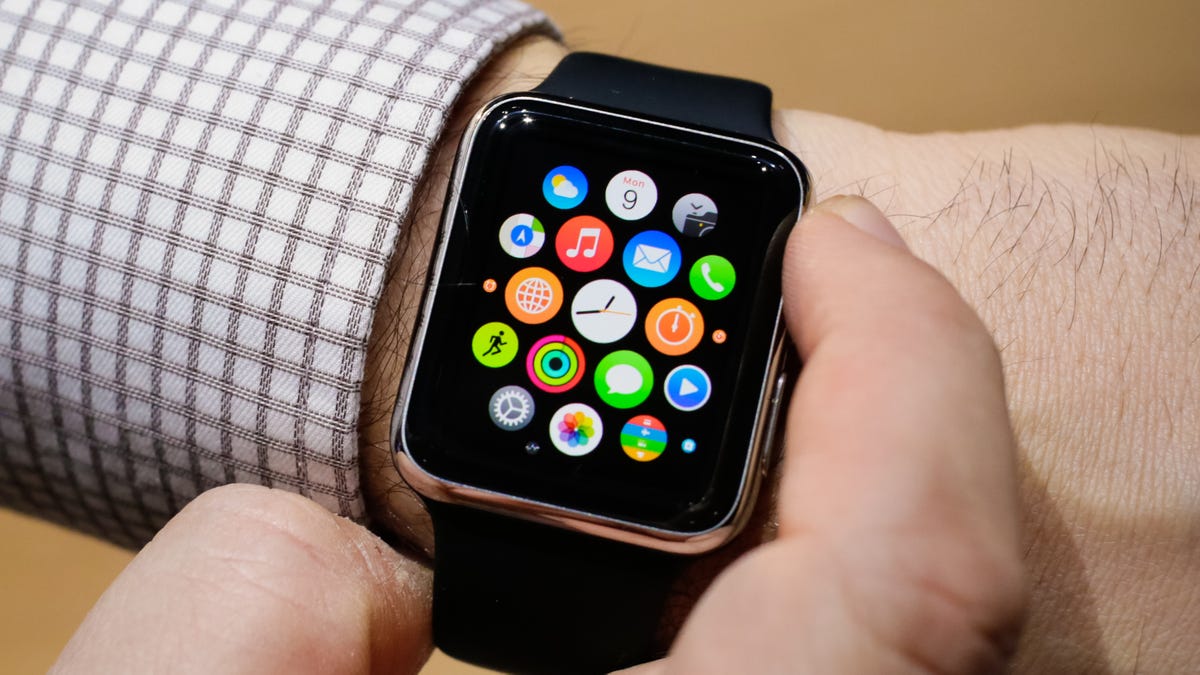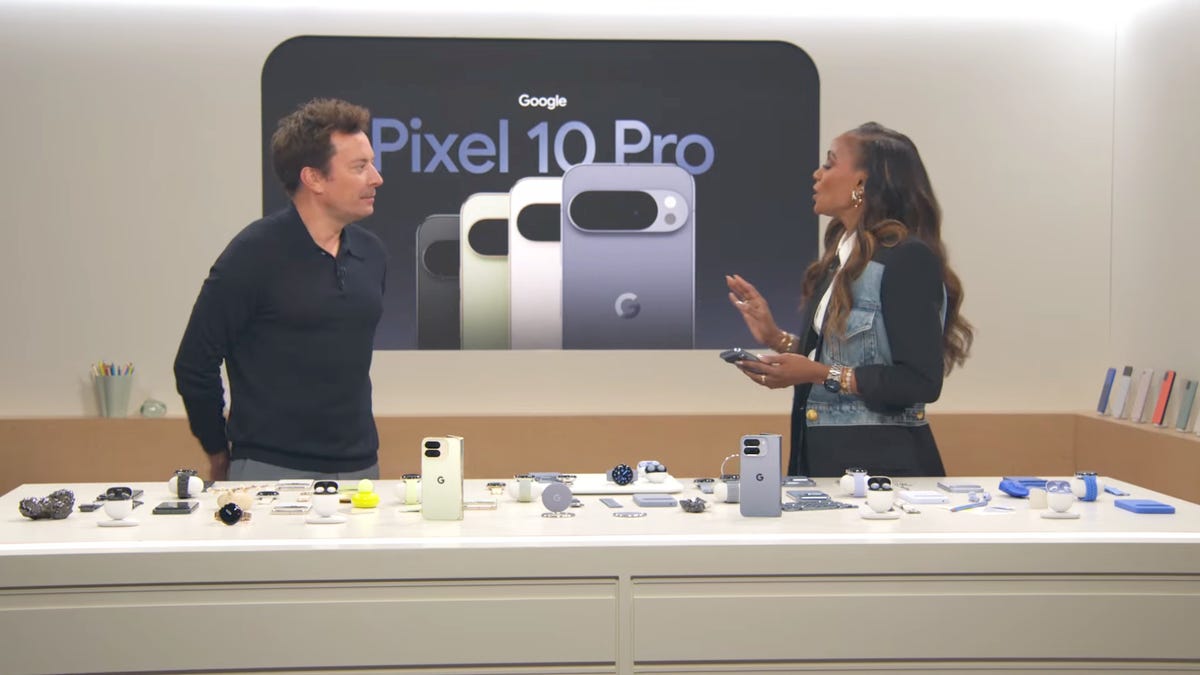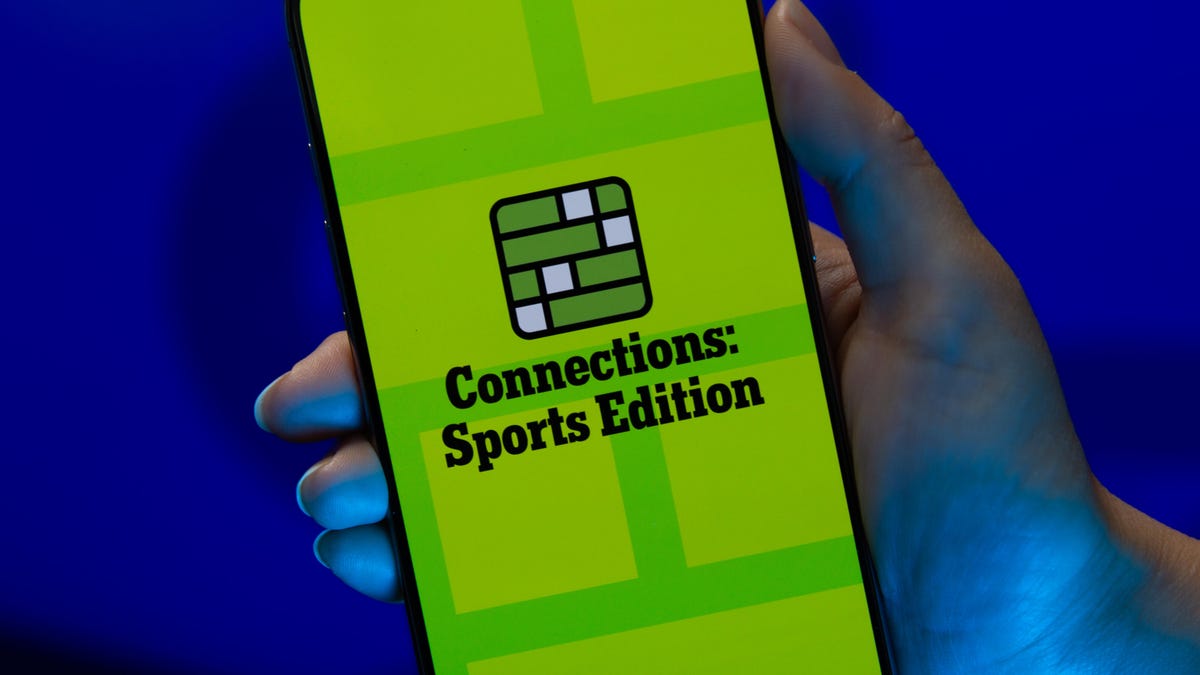Technologies
Why Apple’s First VR Headset May Not Be the One You Buy
The next Apple mixed reality device is reportedly already in the works, and it may be much more consumer-friendly.

Apple’s long-expected, quite mysterious mixed reality headset seems ready to emerge any month now: Perhaps it’ll be announced as soon as Apple’s next WWDC developer’s conference, in June. The headset, which will enter an emerging landscape of hardware including Meta’s Quest 2 and Quest Pro, the PlayStation VR 2 and a bunch of other AR and VR devices, has been reported to be expensive, maybe have its own tethered processing device and perhaps be very limited in its launch features.
Reports also suggest that Apple’s own staff could be divided on whether this headset should launch now, in a not-quite-perfected state, or held for later on when it may approach a more functional pair of everyday glasses.
I’m not sure it makes a difference, because in all likelihood you’re not going to buy the first version anyway, which is expected to cost as much as $3,000.
I don’t mean to sound dismissive, but it’s true: Barring some sort of miracle, there doesn’t seem to be any way Apple’s first-gen AR/VR device will be anything more than a sort of foot in the door. And, by the way, that’s exactly what Apple’s previous big product line entries were, too.


The first Apple Watch wasn’t the same device it is now.
The first Apple Watch: Did you own one?
I remember reviewing the very first Apple Watch, in 2015, and finding it a pretty mixed bag. Nice design touches, really cool digital crown and… very slow. Also, expensive. And kind of complicated, with all its specific features and settings.
Odds are you didn’t own one. Apple added more useful features later: a far faster processor, a bigger screen, an onboard app store, better fitness functions, an always-on display. The price came down, too.
The Apple Watch’s biggest advantage now is its consistency. After generations of other smartwatches have come and gone, Apple has largely stayed the course and iterated on a theme.
The original iPhone: More nostalgia trip than good product
The first iPhone was the same story. I loved how it was a very small web-browsing and email-equipped iPod, and it went with me on my honeymoon. The 2G cellular data was terrible, and most of the features we associate with iPhones (video chat, GPS, Apple Pay, Touch ID or Face ID, an App Store) weren’t around. It was a fancy iPod phone.
The multitouch was impressive, and certain apps, like Google Maps, were stunning. People thought it was cool. Few people were ready to buy one.
AirPods: Initially mockable
I test-drove AirPods at Apple’s 2016 iPhone event, and a photo of me wearing them ended up becoming a meme. It was a given that they looked absurd. Yes, these were wireless earbuds, but wireless earbuds already existed. The price wasn’t bad, but plenty of people seemed happy with the cheap, free-with-iPhone wired earbuds that wouldn’t fall out of your ears and get lost, or didn’t look like cigarette butts sticking out of your ears.
But it didn’t take long for opinion on AirPods to shift, and now… well, they’re everywhere.


The Meta Quest Pro: Since its first VR headset in 2016, Meta is still trying to find a perfect form.
Scott Stein/CNETHow much patience does Apple have?
The big question is how much time Apple has to give to its headset, and multiple iterations of it, to succeed. That’ll be the difference between success and failure. Meta stuck with the Oculus Rift from 2016 to now, creating many versions before the Quest 2 finally started selling decently. It could take years before the real applications of VR and AR are figured out on a larger scale and wireless networks are able to take on the cloud processing that could allow these headsets to eventually work in smaller, lighter forms.
It could be years before input devices like Meta’s neural input wristbands are advanced enough to allow accurate gesture controls that could really be used to replace controllers and touchscreens. It may take several generations of hardware before enough people are in VR and AR to allow truly large-scale metaverse communities to feel meaningful, even after all these years waiting for the tech to arrive.
Apple’s headset will most likely involve every other product in its lineup, connecting with iPhones, iPads and Macs, enhancing the Apple Watch, and pairing with AirPods. It’ll need to bridge every OS and every service. That’s no small amount of work, and it’s doubtful that most of it will be enabled this year.
Whatever next-gen, more affordable headset Apple is expected to work on next, or the eventual glasses it’s aiming for, will be closer to the end goal. As every other VR and AR hardware manufacturer also continues to flex and evolve its offerings, from HTC’s more glasses-like XR Elite to Qualcomm’s smaller AR glasses to Meta’s gradual pivot from VR to an AI-driven AR platform, we don’t know what the final form of any of these headsets will be.
And every VR and AR headset looks weird. I’ve never worn a headset that didn’t make me look either absurd or terrifyingly dystopian.
In that sense, whatever Apple’s first headset looks like doesn’t really matter, because the future for Apple and every other VR/AR company is bound to continue to change. This year looks like a make-or-break year for the metaverse, but in the long run, it’s also just a foot in the door.
Technologies
Today’s NYT Mini Crossword Answers for Thursday, Aug. 21
Here are the answers for The New York Times Mini Crossword for Aug. 21.

Looking for the most recent Mini Crossword answer? Click here for today’s Mini Crossword hints, as well as our daily answers and hints for The New York Times Wordle, Strands, Connections and Connections: Sports Edition puzzles.
There are a lot of Qs in today’s Mini Crossword. 1-Across threw me for a while, but eventually it dawned on me. Need answers? Read on. And if you could use some hints and guidance for daily solving, check out our Mini Crossword tips.
If you’re looking for today’s Wordle, Connections, Connections: Sports Edition and Strands answers, you can visit CNET’s NYT puzzle hints page.
Read more: Tips and Tricks for Solving The New York Times Mini Crossword
Let’s get to those Mini Crossword clues and answers.
Mini across clues and answers
1A clue: Common queries, informally
Answer: FAQS
5A clue: Only four-letter country with a «Q» in its name
Answer: IRAQ
6A clue: TV’s «The White ___»
Answer: LOTUS
8A clue: Something you might «Mark as read»
Answer: EMAIL
9A clue: Late
Answer: TARDY
Mini down clues and answers
1D clue: ___ mignon
Answer: FILET
2D clue: Burnt toast has a strong one
Answer: AROMA
3D clue: Only five-letter country with a «Q» in its name
Answer: QATAR
4D clue: Likely inspiration for the mythical kraken
Answer: SQUID
7D clue: Sneaky
Answer: SLY
Technologies
Everything from Made by Google 2025: Pixel 10, Pixel Watch 4, Pixel 10 Pro Fold Announced
Here’s what you missed at Google’s big event that included new phones, watches, earbuds, Gemini AI features and numerous celebrity cameos.

Even though the Pixel 10 leaks and rumors felt as if they arrived in a steady firehose before today’s Made by Google event — compelling the company to release a teaser video pre-announcing the new phone’s existence a month ago — Google still delivered details it somehow managed to keep private until it was ready to share.
And that delivery was refreshingly fun for a tech event. The Tonight Show host Jimmy Fallon led the proceedings in a very late-night talk show format, bringing on several special guests from media, sports and yes, Google’s own experts to show off the products and features they’ve been working on for today’s announcements.
Pixel 10, Pixel 10 Pro and Pixel 10 Pro XL are real
Surprise, Google announced new phones! OK, this was the least surprising part of the event, but it still feels good to finally know what exists and when it’s coming. Preorders for the Pixel 10, Pixel 10 Pro and Pixel 10 Pro XL begin today and will be in stores and shipping starting August 28.
-
I’m Stoked That Google Made the Pixel 10 a $799 Value-Packed Feature Monster
-
I Tested Google’s Pixel 10 Pro XL in Paris, and I’m Impressed
-
Pixel 10 Pro and Pro XL First Look: Familiar Design, New AI Tricks
-
Google Launches the Full Pixel 10 Line, Including the Pixel 10 Pro and Pixel 10 Pro XL
Pixel 10 Pro Fold opens the next chapter of foldables
Folding phones so far have shared an Achilles Hinge: small particulates like sand can get inside the case and really mess things up. The Pixel 10 Pro Fold is one of the first to have an IP68 rating for dust and water resistance, meaning you can take it to the beach.
-
Pixel 10 Pro Fold Is Tougher, Smarter and Totally Dust Resistant
-
Forget the Pixel 10 Pro Fold. Foldables Should Look Like the Microsoft Surface Duo
-
Google’ Pixel 10 Pro Fold Is Here
Pixel Watch 4 talks to Gemini and is your new health coach
The Pixel Watch 4 includes new fitness options like real-time guidance while exercising. And if you forgot to start a workout, the watch (with AI help) can detect the activity in the background and remind you of it later, giving you credit for the effort you made. It’s also the only smartwatch that can detect a loss of pulse and call emergency services automatically.
-
Well Played, Google: The Pixel Watch 4 May Give Apple Watch Loyalists a Wandering Eye
-
Pixel Watch 4 First Look: Google Just Raised the Bar
-
The Pixel Watch 4 Is Here. Can It Finally Beat Apple?
Pixel Buds 2a are more affordable earbuds
Joining the Pixel Buds 2 Pro in the market are Pixel Buds 2a, an affordable ($130) pair of wireless earbuds that feature active noise cancellation, a smaller and lighter for all, and a twist-to-adjust stabilizer feature for setting a comfortable fit.
-
Google’s New Pixel Buds 2A Look a Lot Like the Pro 2, but Cost Way Less
-
Meet the Pixel Buds 2A: Google’s Budget Answer for ANC Buds
Pixel Buds Pro 2 owners will see new features
Coming in a software update next month, Pixel Buds Pro 2 owners will be able to answer calls or send them to voicemail with a nod or shake of the head. You’ll be able to talk to Gemini live in noisy locations, and benefit from adaptive audio that applies noise cancellation while letting important sounds come through. At the other end, a new feature will protect your hearing from very loud sounds.
Magic Cue is a Gemini assistant that pulls data from your correspondence
In the rollout of all the various AI technologies in the industry, the current stretch goal is «agentic» interactions with software: Having an AI that knows all sorts of details about you and can act to get the important stuff in front of you when needed. (And do it in a privacy-first way, one would hope.)
Magic Cue is Google’s implementation. It’s a new Gemini-based feature that can look through your earlier messages, emails and photos to pull details about things like restaurant reservations and flight times. Magic Cue runs on the Pixel device itself, so sensitive data stays private and not shared to the cloud.
A lot of Gemini AI intelligence is still coming soon
At the start of the event, Fallon sat down in typical talk-show format with Rick Osterloh, senior vice president of platforms and devices, to chat about Gemini and the marvels of AI. Aside from Magic Cue, which will be shipping on the Pixel 10 phones, a lot of the features and products we’ve been hearing about are still on the horizon.
«For instance, Gemini could do something like plan a team celebration dinner for 12 people tonight,» he said. «It might go find a restaurant that’ll accommodate that group…. Look for a karoake place nearby and maybe even order custom T-shirts for the celebration.»
And when will that be possible? Fallon asked. «A lot sooner than people think,» Osterloh replied. «This kind of thing is coming this year.»
The Pixel 10 Pro and 10 Pro XL can zoom to 100x with AI help
Pro Res Zoom on the Pixel 10 Pro phones pushes zooming far beyond what would seem to be possible with typical small cameras. Usually when you zoom beyond the optical limits of the cameras, details get fuzzy as the software upscales the image. With Pro Res Zoom, when you go beyond 30x zoom, it uses generative AI to build a sharper version. CNET’s Andrew Lanxon got both impressive and head-scratching results while making photos in Paris using the Pixel 10 Pro XL.
Camera Coach uses AI to encourage better photos
Smartphone cameras have employed AI for several years, such as identifying subjects in order to blur the background for Portrait modes or quickly snapping several shots at multiple exposures and blending them together to create well-balanced lighting throughout. Now Google is using AI to help you take better photos.
Camera Coach is a new feature in the Pixel Camera app that looks at the scene in front of the lens and generates multiple suggestions for how to improve the photo before it’s captured. To show this off, podcaster Alex Cooper brought Fallon out to be her model and sat him down on a couch. When she activated the feature, Camera Coach suggested that she move the camera closer to the subject, position his head in the upper portion of the frame, lower the camera to eye level and turn on Portrait mode.
«To all the girls that are watching, I personally know how hard it is to train your boyfriend or your husband to get that perfect shot,» said Cooper. «And now Camera Coach can just train all the boys for us.»
Pixel 10 supports Qi2 magnetic charging
The Qi2 spec includes not just faster charging but also an array of magnets on the back for connecting to accessories. Sound familiar? The presenters mentioned Apple’s MagSafe system, then paused with the realization that they probably shouldn’t have name-checked it during the Google event. On the Pixel 10 phones, it’s called Pixelsnap and should work with accessories made for Apple’s ecosystem too.
Pixel 10 will be available in Mexico
In an impressive segment demonstrating Gemini live translation during a phone call, musician Karen Polinesia, who speaks Spanish, announced that for the first time, the Pixel 10 will be available for sale in Mexico.
This article is being updated; stay tuned for more.
Technologies
Today’s NYT Connections: Sports Edition Hints and Answers for Aug. 21, #332
Here are hints and the answers for the NYT Connections: Sports Edition puzzle for Aug. 21, No. 332.

Looking for the most recent regular Connections answers? Click here for today’s Connections hints, as well as our daily answers and hints for The New York Times Mini Crossword, Wordle and Strands puzzles.
To solve today’s Connections: Sports Edition, focus on the endings of some of the words. That should help you see how they connect. Read on for hints and the answers.
Connections: Sports Edition is out of beta after making its debut on Super Bowl Sunday on Feb. 9. That’s a sign that the game has earned enough loyal players that The Athletic, the subscription-based sports journalism site owned by the Times, will continue to publish it. It doesn’t show up in the NYT Games app but now appears in The Athletic’s own app. Or you can continue to play it free online.
Read more: NYT Connections: Sports Edition Puzzle Comes Out of Beta
Hints for today’s Connections: Sports Edition groups
Here are four hints for the groupings in today’s Connections: Sports Edition puzzle, ranked from the easiest yellow group to the tough (and sometimes bizarre) purple group.
Yellow group hint: What you want to do.
Green group hint: Football abbreviations.
Blue group hint: Home to hoops.
Purple group hint: Hidden hockey team names.
Answers for today’s Connections: Sports Edition groups
Yellow group: Objective.
Green group: NFL teams, on scoreboards.
Blue group: NBA arenas ending with «Center.»
Purple group: Ends with an NHL team.
Read more: Wordle Cheat Sheet: Here Are the Most Popular Letters Used in English Words
What are today’s Connections: Sports Edition answers?
The yellow words in today’s Connections
The theme is objective. The four answers are aim, goal, mark and target.
The green words in today’s Connections
The theme is NFL teams, on scoreboards. The four answers are CHI, MIA, MIN and NO. (Chicago, Miami, Minnesota and New Orleans.)
The blue words in today’s Connections
The theme is NBA arenas ending with «Center.» The four answers are Barclays, Chase, Delta and Kia.
The purple words in today’s Connections
The theme is ends with an NHL team. The four answers are geoducks, spoilers, superstars and Vikings. (Ducks, Oilers, Stars and Kings.)
-

 Technologies3 года ago
Technologies3 года agoTech Companies Need to Be Held Accountable for Security, Experts Say
-

 Technologies2 года ago
Technologies2 года agoBest Handheld Game Console in 2023
-

 Technologies2 года ago
Technologies2 года agoTighten Up Your VR Game With the Best Head Straps for Quest 2
-

 Technologies4 года ago
Technologies4 года agoVerum, Wickr and Threema: next generation secured messengers
-

 Technologies4 года ago
Technologies4 года agoGoogle to require vaccinations as Silicon Valley rethinks return-to-office policies
-

 Technologies4 года ago
Technologies4 года agoBlack Friday 2021: The best deals on TVs, headphones, kitchenware, and more
-

 Technologies4 года ago
Technologies4 года agoOlivia Harlan Dekker for Verum Messenger
-

 Technologies4 года ago
Technologies4 года agoiPhone 13 event: How to watch Apple’s big announcement tomorrow
